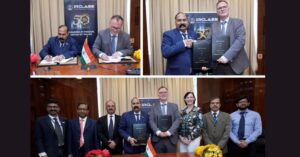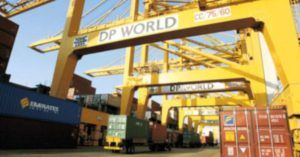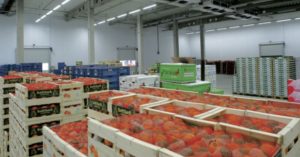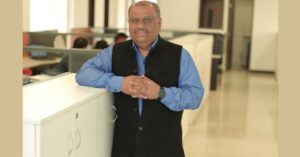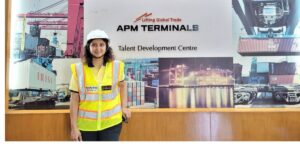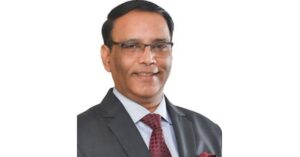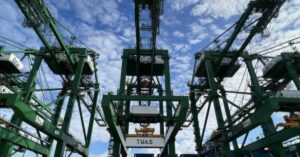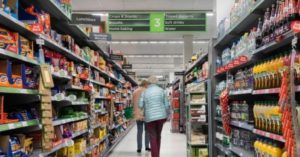The HumSafer Driver Safety Foundation aims at using technology to reduce road accidents in India. Its focus is on building solutions for truck drivers to inculcate safe driving practices in them, in turn making our roads safer. The HumSafer Foundation is headed by Jeehan Kotwal, Sumedh Mane and Zuhair Ali Akbar.
Can you tell us about the foundation and the big idea behind this foundation?
Jeehan: I run a trucking company by the name of JFK Transporters. When we just started, we had about 10 trucks and we used to have 3 to 4 accidents every year. I was not comfortable with that entire statistic and unfortunately that is just a known, considered as a normal trade so to speak, numbers. So, we basically designed and said that we will build the safest trucking company in India and that was kind of where we decided to begin with and over the last 8 years or so now, almost 9, we have made a larger fleet so we have built about 120 of our own trucks and we have large fleet of attached trucks. The ratio has jumped from 3 to 4 every 10 vehicles, we have come to 1 to 2 in every 120. So, that major shift and paradigm shift was what we saw we could do with our trucking company and about 2.5 years ago, Sumedh and I were discussing around okay, this is something that could be a solution not only for our company; if we could do it, then every trucker can do it, and so the idea now is that how can we use the technology that we have in the learnings we have got from a first-hand user experience and make sure it can be replicated for all the trucks in the country. So, that’s what the foundation’s major work is. Of course, this road safety as an issue is not only for us as a trucking community but also is a national issue because we lose 400 people every day in road accidents, and 65% of these are on national highways, somewhat involving trucks as collision items especially for death. So, considering all those factors, Sumedh coming from the human-centered design perspective and me coming from the knowledge domain expertise, technical as well as …that is how we decided to take the foundation ahead. The hope is that one day, nobody has to die because of road accidents and that everybody reaches home safely to their families.
I will come back to you on that. Sumedh, can you talk about the design part of it?
Sumedh: Right from the founders we try to check with every member associated with us. Before joining the business Jehan used to go on the truck as a cleaner. Here we use the word design but at the end of the day, we need to keep it for the person whom we are designing for, he needs to be in the centre of our mind, that’s what we think design is.
Even the pilot of our designing process is backed by very extensive qualitative research. We have a team of 3 people – one person’s job was to basically ask the questions, the second person would be doing all the documenting and third person would be looking for visible cues. So, what are questions that the drivers are opening up to? Which are the questions to which drivers are getting defensive and folding their hands? You know, those are the kind of things that we basically look for. A lot of companies today use the word “design” and “human-centered design,” it has become a buzzword but what it means for us is how do we basically design for the user and how do we communicate in a way where they will understand.
When you talk about road accidents, what is your experience? You have travelled across and then understood the issues, so, is it basically the design of bad roads or the driver being put to longer hours of working or the basic fault in the vehicles or, what exactly and how do you bring the safety?
Sumedh: I think there are a lot of factors there – certain systemic factors and others are infrastructure related. When we were brainstorming, there was this huge 6×9 feet white board and we started from how do we basically save lives? We had this question in the middle and it stemmed out of all these questions – What are the government related factors? What are the infrastructure factors? We had all these factors, but at the end what we basically said is that let’s look at human error because that was is in our control. So, basically, if we actually look at the human statistics, but again these vary from place to place. We looked at NHAI, MORTH and a few other data sources but what we have seen is that among most of the accidents that happen, 20% is actually sleep deprivation and only 2% to 3% is intoxicated driving. So, if you look at it, a lot of the drivers are very overstretched, exhausted, even when they stop at dhabas where they want to basically take breaks, sometimes the battery and the vehicle parts get stolen when they are sleeping. So, a lot of these factors focus on the human aspect and there are lot of other factors which are like systemic things – like there are certain things on the highway that can be better which I am sure Jeehan will be able to jump in but we basically like to focus on all the controllable human aspect.
Jeehan: 80% is human error and like Sumedh said, our idea is that we know that 20% to 30% is sleep deprivation, we know that the rest 60 odd percent is bad driving practices. So, you are overspeeding, continuous driving, harsh braking, harsh acceleration and there are another 150 more parameters. I think fundamentally the question is how can we use tech, how can we use AI, machine learning to understand the pattern of the driver and figure out that this is his fault? It’s like brushing your teeth; the way you drive is the same pattern you follow for years on-end unless and until it’s changed or corrected, and for a habit to change, you need the trigger, you need the habit and you need a reward. So, these 3 things in a loop is what changes habit behaviour.
We understood that very early on. So, what we built around the foundation, the major work it does that it collects rewards for these truck drivers so whether it’s insurance for 10,000 truck drivers which we are doing right now through Covid Kavach for 1 lakh rupees cover, which is a 100-crore package for these 10,000 drivers or whether it’s something to do with giving them incentive, so every 10 kilometers of safe driving, 3 rupees goes into their account. So, every 10,000 kilometers, they make almost 2000 to 3000 rupees extra through UPI directly into their accounts. So, it’s extremely, as far as impact measurement is concerned, very very clean and these rewards directly go to these drivers so they are happily ready to change their behaviour and what I mean by changing their behaviour so for example, something as simple as overspeeding, the moment your truck goes over 60 to 65 kilometers an hour, the mobile application buzzes an alert which tells you you are overspeeding; if you slow down, great, your points increase. If you don’t slow down, your points decrease and based on the points, you get a reward. So, it’s a very simple, easy to understand mechanism which actually is the trigger, the habit change and the reward, all 3 to make sure that this behaviour change shifts over time and of course, this is a long journey, but slowly, steadily, the truck drivers at least to begin with, will be the ones who will be changing the habit pattern.
By and large, trucking is considered to be an unorganized sectors. Of course, there are some large fleet owners, as well. How much of these fleet owners are responsible. Because we keep hearing that we don’t get qualified drivers, we don’t know what do you mean by qualified drivers, but the shortage of drivers, trained drivers, that is one. How much is being done by these fleet companies, fleet owners at least and then in your model how do you approach the drivers if there are small time trucking companies with not many drivers or there are large companies with 100 to 500 trucks. So, how do you work with them and what is their response to these kinds of solutions?
Jeehan: So, as far as trucking companies are concerned and I am pretty confident because we have won every award there is possible in term of not only road safety but in terms of service levels, I can tell you for a fact that no trucking company has any past record of drivers, there is no scoring system, there is no way to measure how good a driver is, how safe he is and that is kind of where we step in, right. We are building; think of it like a CIBIL score for truck drivers. If DHL wants to hire or if XYZ company wants to hire, they don’t know in the last 5 years, how has this driver driven, has he been safe, has he actually driven these many kilometers, etc, and so when we are building this solution, the idea is also to make sure that these drivers get that better score and then hopefully the simple bracket; so when I am hiring for example as well in JFK, we pay the same salary to a 5-year old driver or a 15-year-old driver, it doesn’t matter, as long as he is a driver, they get one salary period, and that glass ceiling never gets broken.
So, when you are able to actually see through data that okay, this driver is actually a good quality driver, whether it is for X company or Y company, it doesn’t matter, what’s important is that through linking it with his Aadhaar, his driver license, his UPI, every thing into one databank where we are sure that this driver is an A category driver, B category driver, C category driver and based on that over the next few years, our hope is that we become the training and tooling system for the country as far as driver scoring is concerned and then hopefully that will encourage drivers to ask for better salaries. That can be the overall piece but to address your second question which was how will we approach them, is that we are not very keen directly through fleet owners because that’s hardly 5% of the market. We are more focused on every truck driver, whether single, chalak malak, or large fleet. Our idea is that if we can get him bought in and make him responsible, safe and think of him and his score, if he is interested to build on it, reach out to him first rather than going to larger fleet owners, that’s not in our opinion a smart way to do this because this is a national issue that we want to solve, it’s not going to just help a few fleet owners to make their businesses more safer so that’s not the idea.
Sumedh, I believe there are some applications in the marketplace to track the driving part of it, GPS locations or the speeding and all sorts of things now, even cars are coming with apps that detect and alert if the driver is getting sleep or dozing off. So how does your application work on the fly?
Sumedh: What you said is absolutely right, like safety especially like safety in this space is not like, there are many, it’s quite a crowded space but the problem is that …there are two problems here, one is either it’s ..there is a hardware associated and there is a cost and the affordability and its accessibility and for it to reach everyone becomes a problem and on the second side, there are other solutions but like I said, so either it’s affordable or it’s basically something which is only accessible to a very small audience. So, which is why, when we basically talk about our idea, we call ourselves an asset light approach to road safety. So how can we, in a small time, make ourselves accessible to everyone? Right now if we have a call center also because at the end of the day, technology is great but you need a human at the end of the line to answer the call, someone has to be able to take complaint or get feedback. So, we have a human at the end, like when our person calls you and they say, I need insurance, how do I get it? That’s where we basically have your KYC checks, Aadhaar, license and the VAHAAN API works well here. So for us to basically understand that this is a driver, this is basically what we want from them.
To answer your question what we do a little differently is, when we were doing our initial research, I used to ask drivers, there are a lot of safety solutions, like what are the things you like, what are the things you dislike, and one of the things they used to keep coming again and again, I remember one guy was saying, I have 15 years of driving experience, but this small boss is telling me how to live my life, so it was a negative reinforcement and it was repetitive, it was done in a very machinic way and that’s where we keep using the word human-centered design, because when we talk to driver, when he is driving well, there is a green screen which basically says “ustad” because we want to show them that sense of respect – “ustad badiya driving.” If a driver is driving continuously for 4 hours, the app basically alerts him by saying arey bhai aap 4 ghanta lagataar chala rahe ho, zara chai break lelo, so we do real time intervention in their local language and we do it in a way that we are not trying to talk down to them, we talk to them saying…even when the ride ends, we say that aap ki hamare saath, ab tak 800 kilometer ki journey khatam ho gayi hai. So, the word humsafer is we are trying to basically say that we are a companion.
If I am a truck driver, how do I enrol myself with this, how do you access this?
Sumedh: Well, it’s actually out in the Google Play Store. So, just a simple downloading the link and a lot of drivers have also been referring it out to, you know lot of these truck drivers are on WhatsApp groups and when they stop at the dhabas, they do talk to each other, which is why our strategy was, if you see, most strategies will start top down, we go to a transporter, we go to a business person and they basically trickle down. We are going the other way which is a little unconventional but we are going straight to the drivers, we are trying to see what they want and it has been a learning experience to understand what they want and it has been basically about the driver and transport nakas, dhabas, that’s where we want to basically start.
What is the motivation? Have you seen any response or feedback from the users?
Sumedh: Oh absolutely. I remember the very early feedback was in pilot stage 2 years ago. Since then, it has been a very long learning. So, when we did the call center piece it was me and two other team mates in our office, we were basically the call center. So, whenever they had complaints like sometimes 10 in the night, 11 in the night, we would get calls saying yeh nahi ho raha hai, wo nahi ho raha hai. So, there were certain bottlenecks, for example, Aadhaar, there was like, the capture screen was a little complicated for drivers. So, we needed to understand, how we can basically modify our screen to simplify this for them. So, it has been…..one is basically keeping a feedback loop and what we have basically taken from that experience is that a question we keep getting asked is, will drivers use smartphone? How many of them have smartphones? Like how many of them will be actually coming onboard? So, the truth is that everyone is already on smartphones, everyone is already using Facebook. So, we were going to start our community section but we realized that everyone is already using Facebook, so how do we capitalize on things like Facebook and also with that earlier I had these questions, how many people would actually care about insurance but there were actually times drivers would call and say ki this is happening, we need insurance even before we go to them. So, they have been very upfront about what they want and it is just our job to basically meet their requirements.
National Highway Authority of India is one agency which always talks about road safety and then they spent lot of money on advertising advocacy on road safety. So, what do you think the government role and is there any way that Government of India also made part of this campaign or anything like that?
Jeehan: Yeah, so actually it is funny to say that but the IT head Mr. Akhilesh Srivastava is on our advisory board of NHAI. He is the IT head, he was the man who implemented FASTag into India as well and we were always in discussions to understand what can we do because this is a systemic issue. The government of course is trying to do its best in terms of improving road infrastructure and reducing blackspots, etc. but the challenge is so systemic and it’s so behaviourally driven, the only way they could do it is by actually incentivizing the drivers to change the behaviour and that’s a mammoth task so which is why the foundation’s work is mostly to get \corporates onboard, to get CSR donors, these are our 500 or we want to sponsor 10,000 drivers and we can make sure that okay with just hardly a 1000 or 2000 rupees per driver over the next 3 months, we can change his behaviour so that’s kind of the main focus area but just the government alone won’t be possible to do this. This is a national issue, 3% of our GDP is lost in this. As far as deaths are concerned, we are the highest in the world. So, this is actually an embarrassing situation because in 2019 we lost 1,50,000 people and so the government wants to do a lot but especially a solution like this, we need to show them enough data which actually shows enough proofs that using our solution actually has saved x amount of lives and so we are in that process and over the next few quarters, we should be able to showcase those numbers to the government as well and that’s when hopefully lights will shine on us.
Earlier you talked about insurance. So, do you have any collaborators, collaborating with any agencies or partners bringing them onboard so that you have a bouquet of offering for the drivers? You talked about something like a CIBIL rating, whether assessing the driver’s efficiency or his experience. So, how do we make this as a valid metrics for them to get better employment or better opportunities? How do you do that?
Jeehan: For insurance, we have Uplift Mutuals as our insurance partner and they have just helped us when we were raising funds during the second wave of the oxygen crisis. We tied up with them and they were able to help us secure funds to insure 10,000 truck drivers and in the last few weeks we have been trying to onboard them in a way that’s very easy, simply through the application, call center and this week onwards, we started onboarding the first 2000 of the 10,000 lot as well. So, essentially, that’s the insurance piece and apart from that, we are also looking at collaborating with other OEMs and giving drivers small gift items, whether it is tyres, lubes or fuel. We are collaborating with dhabas for free tea for the drivers whoever are on that chai break. That’s the partnership model that we are adopting. To answer your question around the scoring system and how to make that legitimate, unfortunately there is no such system yet built so we are taking existing data, existing infrastructure information and kind of building onto that. That being said, it is not that there is no framework, there are some frameworks given by the government, there are some driver training institutes across the world that do have certain standards on road safety but at this stage, it is too nascent and the application also is not or a phone device is not as accurate as maybe machine on the truck and so those gyroscopes, accelerometers are not as sensitive. So, every score will be different initially but the major things like, over-speeding, continuous driving, sleep deprivation, these things can be measured and so that’s where at least we have a base level thing in terms of driver skillset and then from there on, we will have a baseline that this is the bare minimum from which we will then build on and keep learning from their behavioural habits.
What is on your immediate agenda now?
Sumedh: We had a plan, then Covid happened. So, basically now everyone had to pay the price. We realised that during the oxygen time, we saw a lot of opportunities in different areas. We have been fighting to make sure truck drivers get the frontline workers position, it’s very sad that literally even people in the shipping have basically got the frontline worker tag but the drivers who have been working since day 1, delivering all the goods, they still haven’t got that. So, making sure they are vaccinated and they are insured is like number one on our agenda at this stage and product-wise those changes will keep happening…there are always things that we want to always do to improve the product, because we have got this feedback loops going but these two things are a priority, and we are already in the middle of it but we just have to kind of make sure we maximize the number of people that we reach.



